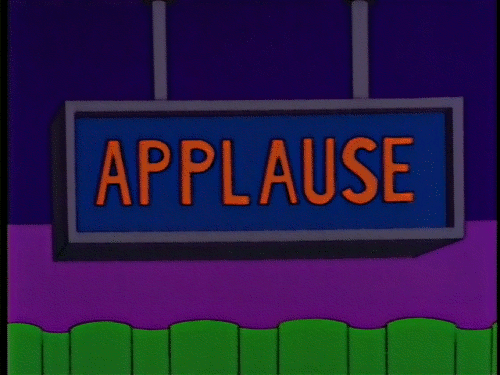The Origins of the Laugh TrackToday the laugh track is certainly an odd part of our culture, adding
The Origins of the Laugh TrackToday the laugh track is certainly an odd part of our culture, adding fake laughter sounds to comedy TV shows as if the audience needs to be convinced that the show is funny. However it has become a staple of modern television broadcasting, and there are few modern sitcoms and comedy shows that do without a laugh track. It’s almost taken for granted that for a show to be funny, fake laughter is a must. So how did this strange and bizarre practice begin, and why?The origins of the laughtrack go back to old timey radio shows from before the introduction of the television. Many radio shows of 1920’s-1940’s were performed live in front of an audience, with audience laughter and applause included as part of the broadcast. When the television became popular in the 1950’s, new TV shows likewise performed live in front of an audience, with genuine laughter likewise being broadcasted to viewers. The broadcasting of TV shows often came with a major problem; sometimes jokes would fall flat, leading to an awkward moment of silence which would be broadcasted over live TV. At other times the opposite could happen where the laughter cause by a joke could overwhelm the broadcast. In the early 1950’s a CBS sound engineer named Charley Douglass developed a solution to the problem with a technique called “sweetening”. Using pre-recorded laughter sounds Douglass could enhance the applause of an audience when a joke fell flat. He would also mute the laughter of the audience when such applause threatened to last too long or become too loud. In 1953, Douglass invented what he called the “laff box”, a machine which resembled a typewriter and could recreate various pre-recorded applause and laughter sounds at various lengths, volumes, and pitches with the stroke of a key. Douglass kept his technology a close secret, giving him a near monopoly over “sweetening”. By the end of the decade he was paid by almost every broadcasting company in the US to sweeten almost every comedy show or sitcom on the air. By the mid 50’s, airing shows with a live audience became less common as it was easier and more economical to pre-record shows instead. Regardless, TV producers believed that it was necessary to recreate the atmosphere of a live show with a live audience. Thus editors and sound engineers began adding tracks of pre-recorded laughter and applause into the recordings post production. Writers and directors even created jokes specifically designed for the laugh track, with a setup, punch line, and a lengthy pause where the track would be added. Soon laugh tracks became common with almost every show, becoming popular to the point that even cartoons and children’s shows included laugh tracks. Don’t believe me, look up old 1960’s episodes of The Jetson’s or The Flintstones, yupp, they have laugh tracks. Imagine that, simulating a live audience for an animated show. Weird… In 1965 CBS tested whether the laugh track was really necessary by conducting an experiment in which they previewed the pilot episode of the World War II comedy “Hogan’s Heroes” to test multiple test audiences. Two versions were showed, one with a laugh track and one without. The results showed that test audiences who viewed the version with a laugh track scored the episode with high ratings, while the version without scored low ratings. Yes, human beings are that easy to manipulate.As a result, in 1965 CBS began airing all of their comedy shows with laugh tracks, and in no time all other broadcasters were doing the same. By then Douglass had adapted his technology from merely sweetening an audience to creating whole diverse laugh tracks for entire shows. Douglass would maintain his monopoly over the laugh track business until the 1970’s when eventually competitors would develop their own technologies that could also create laugh tracks. In the 1980’s many shows began to air episodes without laugh track. This was a precedent set by the popular comedy MASH, whose creators, Larry Gelbart and Gene Reynolds, did not want a laugh track due to the cerebral and often serious nature of the show. However they were required to do so by CBS, thus they used a laugh track but used a subdued “audience” and used it as sparingly as possible. Today shows lacking laugh tracks are becoming more and more popular, regardless the laugh track still dominates most major network prime time comedy shows and sitcoms aired by major broadcasting companies. -- source link
#history#tv#comedy#sitcoms#laugh track#entertainment

